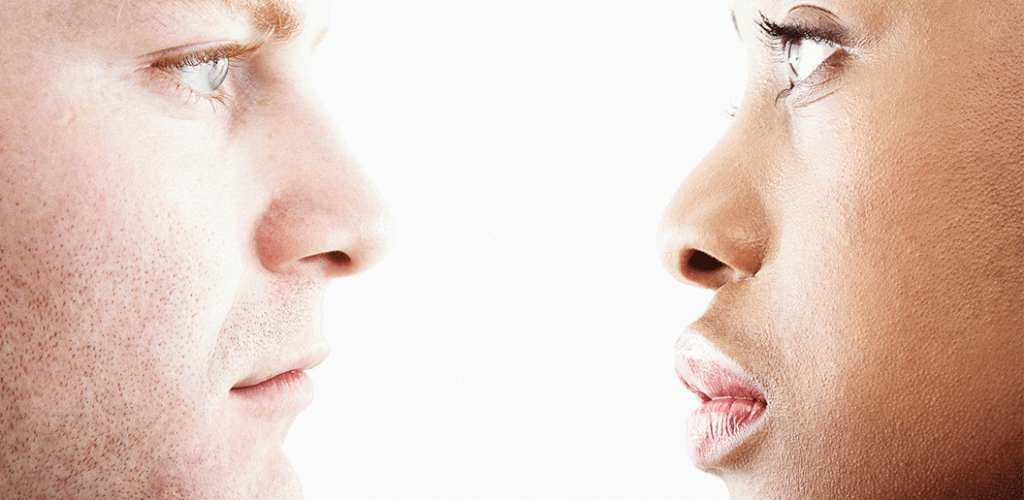It’s no surprise that people make assumptions about you based on what you are wearing and your general appearance. What is astonishing is how quickly they do it. Psychologists call it “thin-slicing. Within moments of meeting, people decide all sorts of things about you, from status to intelligence to conscientiousness. Career experts say it takes just three seconds for someone to determine whether they like you and want to do business with you.
Fortunately, you have some control over the way others see you. For example, wearing tailored clothes and looking at your conversation partner in the eye will generally create a more positive impression. But as for how aggressive you seem, that’s largely determined by your facial structure. Following are assumptions people make about you, sometimes accurate and sometimes less so, based on first impressions.
Trustworthiness
People may decide on your trustworthiness in as little as a tenth of a second. Princeton researchers found this out by giving one group of 245 university students 100 milliseconds to rate the attractiveness, competence, likability, aggressiveness, and trustworthiness of actors’ faces. One hundred and twenty-eight members of another group were able to take as long as they wanted. Results showed that ratings of trustworthiness were highly similar between the two groups, even more similar than ratings of attractiveness suggesting that we figure out almost instantaneously if we can trust someone.
Intelligence
A 2007 study led by Nora A. Murphy, a professor at Loyola Marymount University, found that looking your conversation partner in the eye might help encourage people to see you as more intelligent. For the study, 182 college students were asked to discuss an assigned topic in pairs for five minutes. Partners then rated each other on how smart they seemed. Results showed that people were perceived as more intelligent when they held their partner’s gaze while talking. “Looking while speaking was a key behavior,” she wrote. Wearing thick glasses and speaking expressively could help, too.

Religiosity
One study, led by Laura P. Neiman at the University of California at Berkeley, found that 123 undergrads could accurately assess 113 people’s religiosity simply by looking at full-body photographs of those individuals. In this case, religiosity was measured by asking the individuals pictured as well as three people who knew them well to complete a questionnaire. Those who appeared to be smiling, energetic, relaxed, and neat were judged to be more religious and in fact, they usually were.

Dominance
Bald isn’t just beautiful, it’s powerful. In a University of Pennsylvania experiment, undergrads looked at 25 photos of men, some with shaved heads and others with full heads of hair. The students rated men with shaved heads as more dominant. Two larger follow-up experiments with 344 and 552 adults, respectively, had similar results. Participants tended to rate bald men those who’d had their hair either digitally removed or those with shaved heads as more dominant. Importantly, researchers found that it was specifically shaved heads that people seemed to associate with dominance not just the lack of hair. So if it’s starting to go, you might want to shave it.

Success
A British-Turkish study of 274 people had them look at faceless photos of men in tailored vs. off-the-peg suits for five seconds. They tended to rate the guys in tailored suits as more successful. “On the evidence of this study it appears men may be advised to purchase clothing that is well tailored, as it can positively enhance the image they communicate to others,” the authors wrote.

Wealth
In a 2011 study of college students who were shown photos of a male model dressed in either business or casual attire and then asked questions about how he’d perform in a variety of jobs, the participants tended to predict that the crisply dressed men would make more money and get promoted sooner.
Adventurousness
People don’t just read into who you are from your appearance: they’re also looking at the way you move. In a study, a group of students were shown video clips of other students walking, some with looser gaits, some with tighter ones. Just a few steps were needed to give the viewers a sense of the other person’s personality. They tended to equate looser gaits with extroversion and adventurousness while seeing the more clipped walkers as more neurotic. Intriguingly, the participants were generally wrong in their assumptions.

Aggressiveness
Sometimes, first impressions can be totally wrong other times they can be right on point. A Canadian experiment of undergraduate women found that they were able to accurately assess how aggressive 37 different men were after looking at a photograph of their faces for 39 milliseconds. The researchers measured aggression by having the men pictured play a computer game in which they had the option to steal points from another player. Researchers also found a connection between men with larger facial width-to-height ratios (regardless of their expressions) and perceived aggression levels and reasoned that it could be because angry expressions involve lowering the brow and raising the upper lip, which increases this ratio.

Socioeconomic Status
A Dutch study found that people wearing name-brand clothes Lacoste and Tommy Hilfiger, to be precise, were seen as higher status and wealthier than folks wearing nondesigner clothes when they approached 80 shoppers in a mall.” Perceptions did not differ on any of the other dimensions that might affect the outcome of social interactions,” the authors wrote.”There were no differences in perceived attractiveness, kindness, and trustworthiness, just status and wealth.
Extroversion
A study led by German researchers had people look at photographs of hundreds of faces and had them rate the people pictured on different personality traits. The researchers say extroverts generally display more cheerful expressions in photographs, so they’re easy to spot. They write: “Many people attempt to express positive emotions by smiling, particularly when being photographed, but introverts seem to do so less frequently, less skillfully, and in more reserved ways than extroverts.”

Leadership
Researchers asked undergrads to review headshots of close to 100 managing partners at top law firms and rate them on different personality traits, including dominance, facial maturity, likability, and trustworthiness. The researchers combined the partners’ scores on dominance and facial maturity to create a single “power” score and combined their scores on likability and trustworthiness to create a single “warmth” score. People who scored higher on power tended to lead more profitable firms. Even weirder, the same findings held true when participants looked at college yearbook photos of 73 of the managing partners, some of which were taken half a century earlier.
Friendship
“Friendship chemistry” is a real thing. Friendship chemistry coined by researchers of a 2015 paper published in the Journal of Social Science is defined as the initial connection between pals. Those who are agreeable, or friendly; open to experience; and conscientious, or hardworking and organized are more likely to experience friendship chemistry, the researchers determined. But if you want to make a lasting friendship it will take more than just a good first impression. It takes about 40 to 60 hours to form a casual friendship, 80 to 100 hours to be upgraded to being a friend, and about 200 hours to become good friends, one study found.
Author Nicholas Boothman wrote the book “How to Make People Like You in 90 Seconds or Less.” The book highlights key strategies for making a trusting connection with your conversation partner while greeting them. The best part? The whole process takes just four seconds and the best part is everyone can do it.
Be open
Boothman says you’ll want to open both your body and your attitude.
In terms of your body language, Boothman says you should aim your heart directly at the person you’re meeting. Don’t cover your heart with your hands or your arms. And if you’re wearing a jacket, unbutton it beforehand. It’s equally important to cultivate a positive attitude. While you’re greeting the person, Boothman says you should feel and be aware of that positivity.

Make eye contact
Boothman says you should be the one to initiate eye contact and let your eyes reflect your positive attitude. If you feel uncomfortable making eye contact, he suggests a strategy for getting used to it: When you’re watching TV, note the eye color of the people on camera and say the name of the color in your head. The next day, do the same thing with every person you meet.
Just make sure to look away at some point — one recent study found that most people preferred eye contact that lasted about three seconds. And no one in the study preferred eye contact that lasted longer than nine seconds.
Beam
Boothman advises being the first one to smile. You’ll send the message that you’re sincere.
Research also suggests that smiling when you meet someone in a happy context is a useful way to get them to remember you. But keep in mind: If you’re employing this strategy in a job interview, consider letting your smile fade after the initial meet-and-greet.

In one study, researchers asked college students to role-play job interviews. They found that students who played candidates for the position of newspaper reporter, manager, and research assistant were less likely to get the hypothetical job when they smiled — especially during the middle of the interviews.
Say ‘Hello’
Whether you say “hi,” “hey,” or “hello,” or use another salutation, you should sound delighted to be making this person’s acquaintance. Next, you’ll want to extend your hand. Make sure to give a firm handshake, which generally creates a more positive impression.
When the person you’re meeting gives his or her name, try to repeat it a few times. For example, you might say, “Sara. Nice to meet you, Sara!”
If you’re meeting multiple people and can’t shake everyone’s hand at once, Boothman says it’s possible to conduct a “hands-free” handshake. Do everything you’d normally do while shaking someone’s hand — point your heart in their direction, say hello, and smile — but don’t extend your hand.
Lean in
Finally, although there’s no need to fall over into the person you’re meeting, Boothman suggests an “almost imperceptible forward tilt” to show that you’re open to and interested in what the person has to say.


